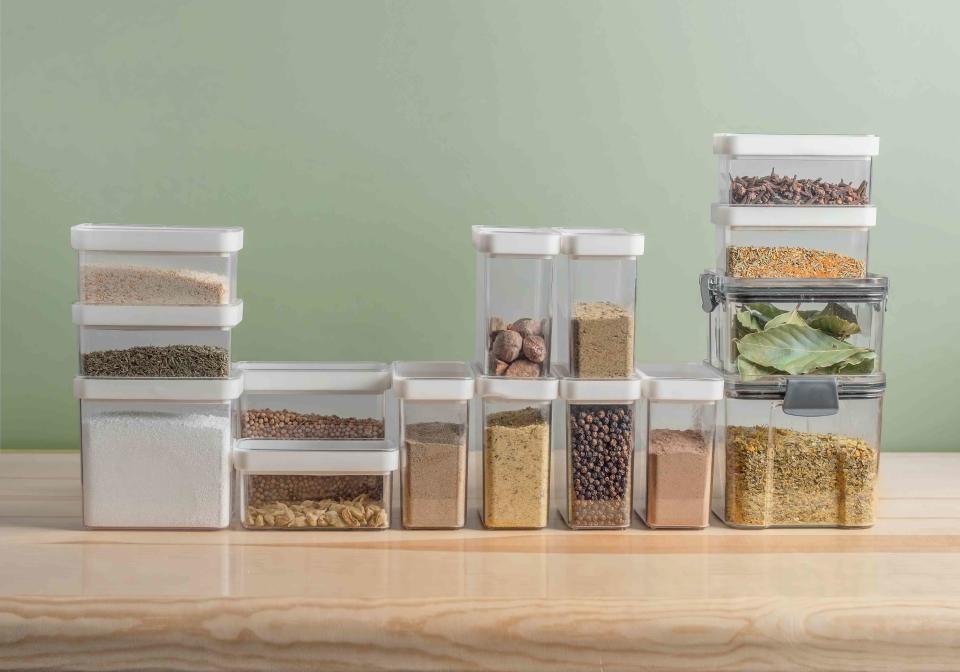7 Ways You're Organizing Your Home Wrong, According to the Experts
These mistakes could be standing between you and a tidy home.

Leonid Sneg/Getty Images
Getting organized can be a challenge. Whether you’re trying to organize a smaller space, like a kitchen or bathroom, or an entire home, you’re bound to make a mistake or two. Fortunately, these blunders can easily be prevented if you’re aware of the steps that could be holding you back. So, we talked with professional organizers to find out the biggest organizing mistakes people make.
Related: The Real Simple Guide to Decluttering Every Room
Not Decluttering First
Whether you’re organizing your kitchen or your closet, the first step is always getting rid of what you don’t need. According to Lindsey Mahanna, professional organizer and founder of Clutter to Clarity, it's always best to start your organizing project by decluttering first. “Not only can you then buy containers to fit what you are actually keeping, but there's a good chance you will empty out some containers that can be reused or may discover new containers that you bought during a previous attempt and have never used,” she explains.
Not Measuring Before Purchasing New Products
Kris Hargrove, professional organizer and founder of Organized by Kris tells me when you don’t measure your space before buying organizing bins, you’ll be deeply frustrated when you go to organize. “The products you bought won’t fit properly, and your space won’t function like you envisioned in your mind," Hargrove says. "Your organizing mission will fail. Always measure the length, depth, and height of your space. Then, compare product measurements to your space measurements for the perfect fit.”
While this might take a little bit of extra work upfront, it will save you time, energy, and money in the long run.
Choosing The Wrong Bin Material
There are many different types of organizing bins on the market, so it’s easy to make a mistake. According to Manhanna, many clients often choose the wrong material, which can make it more of a challenge to stay organized. “Some folks really need clear bins to see what they have and others prefer their items more hidden away,” she explains.
It’s also important to consider where you're using the bin. While clear bins can be helpful in places like the bathroom or inside the pantry, they may look sloppy when organizing spaces like kids’ rooms or open shelves.
Not Sorting Items Before Putting Them Away
While everyone has their own way of organizing, it’s crucial to sort things before adding them to a bin, explains Hargrove. “If you don’t sort and categorize your items before adding them to a bin, you’ll end up with bins upon bins of random things to dig through," she says. "This is no different than having drawers, cabinets, and shelves stuffed with random things to dig through. By sorting and categorizing first, you’ll be adding like-items to bins and saving a ton of time when you go to look for what you need.”
For example, if you're organizing spices, organize the ones you use for savory dishes separately from sweet dishes, or the ones you use every day in a separate bin from those you only use for the holidays.
Not Using Labels
When you spend valuable time organizing but fail to add labels, you run the risk of forgetting where your items are, Hargrove says. “Whether it’s in a bin, in a drawer, or on a shelf, labels help you keep a home for your items," she explains. "If you share your space with others, labels help them know where to put things back as well. Labels are the holy grail for maintaining the organizing systems you worked so hard to create.”
If you're not a fan of labels, opt for clear bins, because you’ll be able to more easily identify what’s in the bin.
Not Creating Zones in Your Home
Hargrove advises creating strategic zones in your home to help you stay organized and know where everything is. “Having a designated spot for incoming mail, packages, returns, homework, shoes, keys, backpacks, etc. helps to keep the clutter to a minimum,” she says.
She also recommends having a “drop zone” close to the front door of your home. “Creating a command center provides a space for time-sensitive items you need to review and take action on,” Hargrove explains.
One easy way to create a drop zone is to get a storage bench with a built-in shelf for shoes as well as hooks for coats and bags.
Not Utilizing Vertical Space Properly
While you might not think you have enough space to store all of your things—in reality, you may simply be forgetting to consider all the vertical space your home has to offer. “Vertical space is often underutilized and thought of as dead space when, in fact, it can be very useful," Hargrove says. "Storing items you don’t use often higher up creates space for items you use frequently."
Related: 14 Genius Organizing Tips That Changed the Way We Tidy Up
For more Real Simple news, make sure to sign up for our newsletter!
Read the original article on Real Simple.


